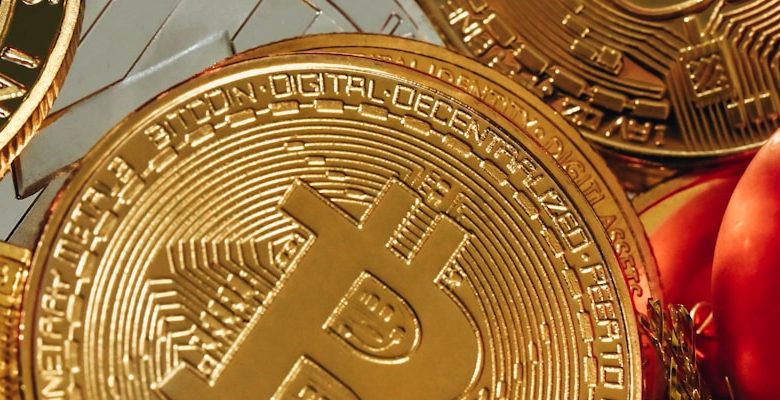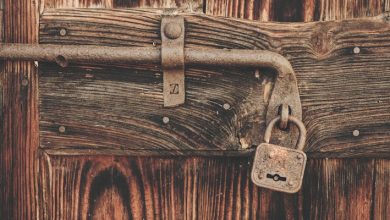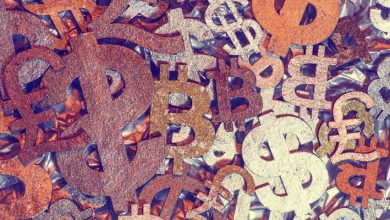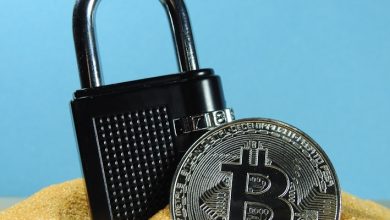Cryptocurrency Wallet Security: Best Practices to Keep Your Assets Safe

- Understanding the importance of cryptocurrency wallet security
- Tips for choosing a secure cryptocurrency wallet
- Implementing strong passwords and two-factor authentication for added security
- Backing up your cryptocurrency wallet to prevent data loss
- Avoiding phishing attacks and other common security threats
- Regularly updating your cryptocurrency wallet software to stay protected
Understanding the importance of cryptocurrency wallet security
Understanding the significance of cryptocurrency wallet security is crucial for anyone who holds digital assets. A cryptocurrency wallet is a digital tool that allows users to store, send, and receive cryptocurrencies such as Bitcoin, Ethereum, or Litecoin. Just like a physical wallet, it is essential to keep your cryptocurrency wallet secure to prevent unauthorized access and potential theft.
One of the primary reasons why cryptocurrency wallet security is so important is due to the irreversible nature of blockchain transactions. Once a transaction is initiated, it cannot be reversed, meaning that if your wallet is compromised, you may lose your assets permanently. Therefore, taking proactive measures to secure your cryptocurrency wallet is essential to safeguard your investments.
There are several best practices that you can follow to enhance the security of your cryptocurrency wallet. Using a hardware wallet, such as a Ledger or Trezor device, is considered one of the most secure methods of storing your digital assets. These hardware wallets store your private keys offline, making them less vulnerable to hacking attempts.
Additionally, enabling two-factor authentication (2FA) on your cryptocurrency wallet adds an extra layer of security by requiring a second form of verification before allowing access to your funds. Regularly updating your wallet software and keeping your recovery phrase offline in a secure location are also crucial steps in maintaining the security of your cryptocurrency wallet.
By prioritizing cryptocurrency wallet security and following best practices, you can mitigate the risk of theft and ensure that your digital assets remain safe and secure. Remember that the cryptocurrency market is still relatively young and unregulated, making it a prime target for cybercriminals. Taking proactive steps to protect your investments is key to enjoying the benefits of digital currencies without the fear of potential loss.
Tips for choosing a secure cryptocurrency wallet
When it comes to choosing a secure cryptocurrency wallet, there are several factors to consider to keep your assets safe. Here are some tips to help you make an informed decision:
- Research different types of wallets available, such as hardware, software, and paper wallets, to determine which one best suits your needs.
- Look for wallets that offer two-factor authentication to add an extra layer of security to your account.
- Check if the wallet has a good reputation in the cryptocurrency community and has not been associated with any security breaches.
- Make sure the wallet allows you to control your private keys, as this gives you full ownership and control over your assets.
- Consider the user interface of the wallet and ensure it is easy to use and navigate, especially if you are new to cryptocurrency investing.
By following these tips, you can choose a secure cryptocurrency wallet that will help keep your assets safe from potential threats and hacks. Remember to always stay informed and update your wallet regularly to maintain security.
Implementing strong passwords and two-factor authentication for added security
Implementing strong passwords and two-factor authentication are crucial steps in ensuring the security of your cryptocurrency wallet. When creating a password, avoid using easily guessable information such as your name, birthdate, or common words. Instead, opt for a combination of uppercase and lowercase letters, numbers, and special characters to create a complex and unique password.
In addition to a strong password, enabling two-factor authentication adds an extra layer of security to your account. This feature requires you to provide a second form of verification, such as a code sent to your phone or email, in addition to your password. By requiring both something you know (your password) and something you have (your phone), two-factor authentication significantly reduces the risk of unauthorized access to your wallet.
By implementing these security measures, you can better protect your cryptocurrency assets from potential threats such as hacking and phishing attacks. Remember, the security of your wallet is ultimately in your hands, so take the necessary precautions to safeguard your investments.
Backing up your cryptocurrency wallet to prevent data loss
Backing up your cryptocurrency wallet is a crucial step in ensuring the safety of your assets. By creating a backup, you can prevent the risk of data loss in case your wallet gets lost or damaged. There are several ways you can backup your wallet, including using a hardware wallet, paper wallet, or cloud storage solution.
One of the most secure ways to backup your cryptocurrency wallet is by using a hardware wallet. These devices store your private keys offline, making them less vulnerable to hacking or malware attacks. Simply follow the instructions provided by the hardware wallet manufacturer to create a backup of your wallet.
Another option is to create a paper wallet, which involves printing out your private keys and storing them in a secure location. While paper wallets are not as convenient as hardware wallets, they can be a good option for long-term storage of your assets.
Finally, you can also backup your wallet using a cloud storage solution, such as Google Drive or Dropbox. However, it is important to encrypt your wallet file before uploading it to the cloud to prevent unauthorized access.
Overall, backing up your cryptocurrency wallet is an essential step in protecting your assets from being lost or stolen. By choosing a secure backup method and regularly updating your backup, you can have peace of mind knowing that your funds are safe and secure.
Avoiding phishing attacks and other common security threats
When it comes to keeping your cryptocurrency wallet secure, it is crucial to be aware of common security threats such as phishing attacks. Phishing attacks are a type of scam where attackers try to trick you into revealing sensitive information, such as your private keys or passwords, by pretending to be a legitimate entity.
To avoid falling victim to phishing attacks or other security threats, follow these best practices:
- Always double-check the URL of websites you visit to ensure they are legitimate and secure.
- Avoid clicking on suspicious links or downloading attachments from unfamiliar sources.
- Enable two-factor authentication on your cryptocurrency wallet for an extra layer of security.
- Regularly update your wallet software to protect against known vulnerabilities.
- Use a hardware wallet for storing large amounts of cryptocurrency for added security.
By staying vigilant and following these best practices, you can help safeguard your cryptocurrency assets from potential security threats and keep your wallet secure.
Regularly updating your cryptocurrency wallet software to stay protected
Regularly updating your **cryptocurrency wallet software** is essential to ensure the security of your **digital assets**. By keeping your **wallet software** up to date, you can protect yourself from potential vulnerabilities and **security threats** that could compromise your **cryptocurrency holdings**. Hackers are constantly looking for ways to exploit weaknesses in **wallet software**, so staying current with updates is crucial in safeguarding your **investment**.
Updating your **cryptocurrency wallet software** is a simple process that can be done with just a few clicks. Most **wallet providers** release regular updates to address **security** issues and improve overall functionality. By installing these updates promptly, you can stay ahead of potential **security risks** and keep your **digital assets** safe from **hackers**.
In addition to updating your **cryptocurrency wallet software**, it is also important to follow best practices for **security**. This includes enabling two-factor authentication, using strong and unique passwords, and being cautious of **phishing** attempts. By taking these steps in conjunction with regular **software updates**, you can significantly reduce the likelihood of falling victim to **cyber attacks** and protect your **cryptocurrency investments** for the long term.



